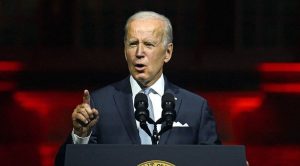US President Joe Biden and lawmakers from the Senate cracked a bipartisan deal on Thursday to ensure a hurdle-free legislative way for the American infrastructure plan. However, the plan has been negotiated amongst lawmakers on multiple occasions and was recently revamped to achieve consensus.
Days after the negotiations between Republican lawmakers and Biden collapsed, a bipartisan group of 10 US Senators said two weeks ago that they reached a tentative agreement on a “realistic” infrastructure plan.
After Biden’s announcement on Thursday, the White House released a fact sheet that outlined the exact break up of the plan, which is valued at $1.2 trillion.
The break up of finances has been divided into 2 separate categories, one addressing the expenses on transportation infrastructure while the second half focuses on the environment, internet, water amongst many other divisions.
Transportation division:
| Expense category | Amount (in billions) |
| Roads, bridges, major projects | $109 |
| Safety | $11 |
| Public transit | $49 |
| Passenger and Freight Rail | $66 |
| EV infrastructure | $7.5 |
| Electric buses / transit | $7.5 |
| Reconnecting communities | $1 |
| Airports | $25 |
| Ports and Waterways | $16 |
| Infrastructure Financing | $20 |
Other infrastructure expenses:
| Expense category | Amount (in billions) |
| Water infrastructure | $55 |
| Broadband infrastructure | $65 |
| Environmental remediation | $21 |
| Power infrastructure (grid authority) | $73 |
| Western Water Storage | $5 |
| Resilience | $47 |
The $1.2 trillion plan falls under the umbrella of Biden’s ‘Build Back Better’ plan for America, which the President boasted about during his election campaign in 2020.
It will focus on aspects like clean water, clean power, rolling back the impact of pollution, introducing resilience, addressing climate change and universal broadband infrastructure, according to the White House fact sheet.





